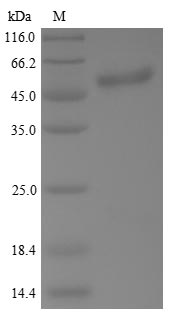Very nice to receive your inquiry. The product details are confirmed as below.
Code: CSB-YP024077HU
Name: Recombinant Human Cellular tumor antigen p53(TP53)
Expression Region: 1-393aa, Full Length
Tag Info: N-terminal 6xHis-tagged
Expression Sequence:
MEEPQSDPSVEPPLSQETFSDLWKLLPENNVLSPLPSQAMDDLMLSPDDIEQWFTEDPGPDEAPRMPEAAPPVAPAPAAPTPAAPAPAPSWPLSSSVPSQKTYQGSYGFRLGFLHSGTAKSVTCTYSPALNKMFCQLAKTCPVQLWVDSTPPPGTRVRAMAIYKQSQHMTEVVRRCPHHERCSDSDGLAPPQHLIRVEGNLRVEYLDDRNTFRHSVVVPYEPPEVGSDCTTIHYNYMCNSSCMGGMNRRPILTIITLEDSSGNLLGRNSFEVRVCACPGRDRRTEEENLRKKGEPHHELPPGSTKRALPNNTSSSPQPKKKPLDGEYFTLQIRGRERFEMFRELNEALELKDAQAGKEPGGSRAHSSHLKSKKGQSTSRHKKLMFKTEGPDSD
1. Storage Buffer: 20mM Tris-HCl, 0.5M NaCl, pH 8.0, 20% glycerol
2. Protein Concentration of Previous Lot: 0.1 mg/ml, by the Bradford Method. Here attached is the Datasheet&COA of previous lot for your reference.
If you hae any requirement for concentration, communicate with us and remark in your PO.






